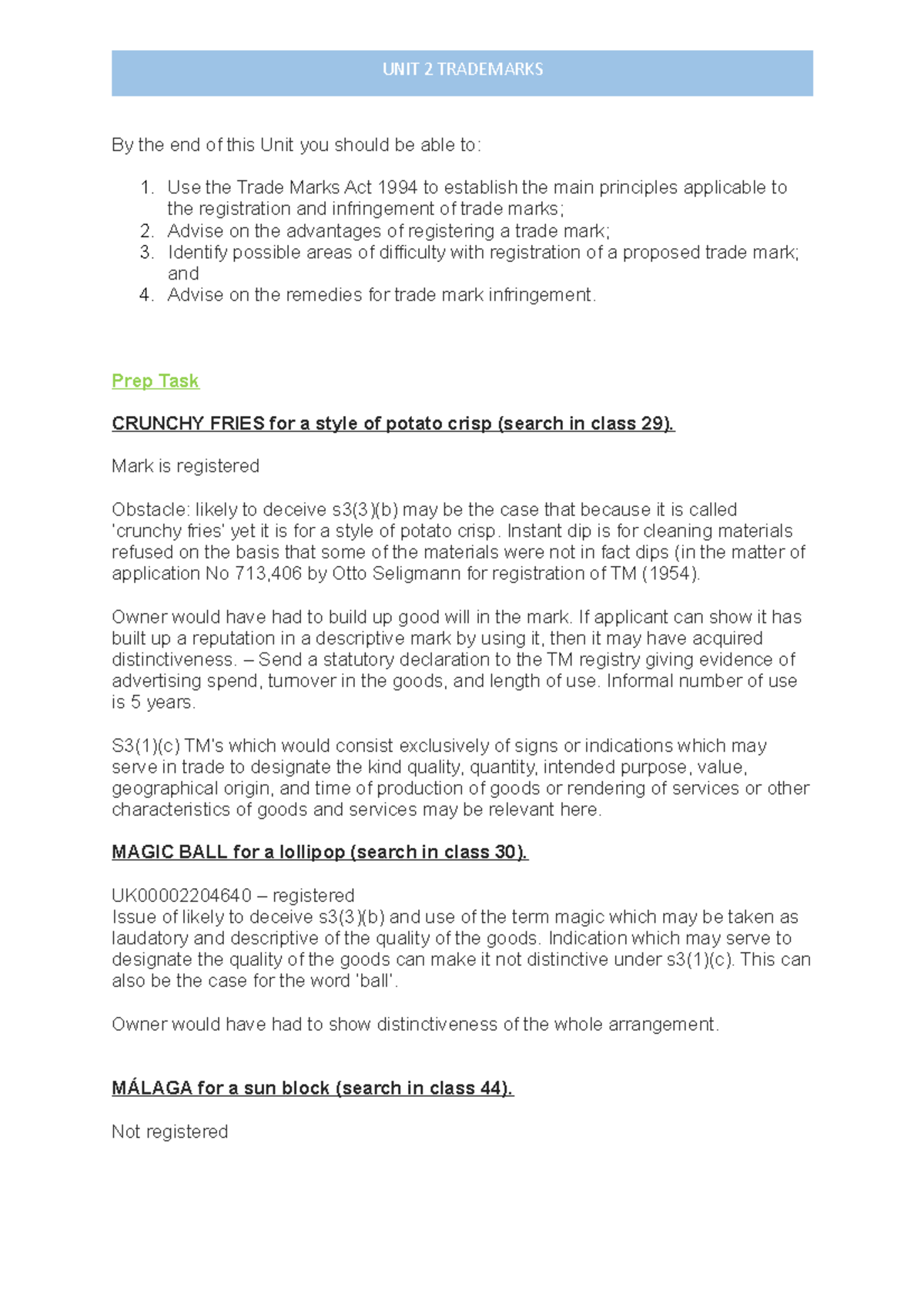Introduction

Image: www.studocu.com
In the competitive realm of business, brand identity is paramount. Trademarks serve as the cornerstone of this identity, safeguarding your unique mark in the marketplace. However, circumstances may arise where you need to transfer ownership of your trademark. The assignment of trademarks in South Africa is a crucial legal process that ensures the seamless transition of intellectual property rights.
What is Trademark Assignment?
Trademark assignment refers to the legal transfer of ownership rights of a registered trademark from one entity (the assignor) to another (the assignee). The assignee acquires exclusive rights to use, exploit, and benefit from the trademark. Notably, trademark assignments must be in writing and registered with the Companies and Intellectual Property Commission (CIPC) to be legally valid.
Why Assign a Trademark?
There are several reasons why you may consider assigning a trademark:
- Mergers and acquisitions: As businesses evolve, they may merge or acquire other entities. Trademark assignments facilitate the transfer of trademark rights along with the transfer of assets.
- Brand restructuring: Sometimes, companies may decide to restructure their brand portfolio. Assignments allow them to transfer trademarks to subsidiaries or other legal entities within the group.
- Commercial collaborations: Joint ventures or licensing agreements may require the assignment of trademarks to facilitate the use and distribution of products or services.
Legal Considerations
- Validity: The trademark must be validly registered in South Africa and not subject to any objections or oppositions.
- Consent: The assignment requires the consent of both the assignor and the assignee.
- Restrictions: Some trademarks may have restrictions or conditions attached to their registration. These conditions must be carefully considered and disclosed in the assignment agreement.
- Filing: As mentioned earlier, the assignment must be in writing and registered with the CIPC. The application must include the names and addresses of the assignor and assignee, as well as details of the assigned trademark.
Steps in Trademark Assignment
- Prepare an assignment agreement outlining the terms of the transfer.
- Complete the CIPC assignment application form and attach the necessary documents.
- Submit the application along with the prescribed fees to the CIPC.
- The CIPC will review the application and approve it if it complies with all legal requirements.
- The assignment will be registered and updated in the Trademarks Register.
Benefits of Trademark Assignment
- Secure Intellectual Property Rights: Assignments safeguard your trademarks and protect your business from infringement and unauthorized use.
- Enhance Brand Value: Strong trademarks have significant brand value. Assignments allow you to maximize the commercial potential of your trademarks by transferring them to entities that can leverage their value.
- Simplify Brand Management: Assignments streamline brand management by consolidating trademark rights under a single entity. This simplifies licensing, enforcement, and overall brand strategy.
Conclusion
Trademark assignments play a pivotal role in the dynamic world of business. By understanding the legal framework and following the proper procedures, you can effectively assign your trademarks and secure your intellectual property rights. Whether you are merging companies, restructuring your brand, or collaborating with other entities, trademark assignments empower you to safeguard the core of your business identity and expand your commercial horizons.

Image: www.linkedin.com
Assignment Of Trade Mark South Africa Example






